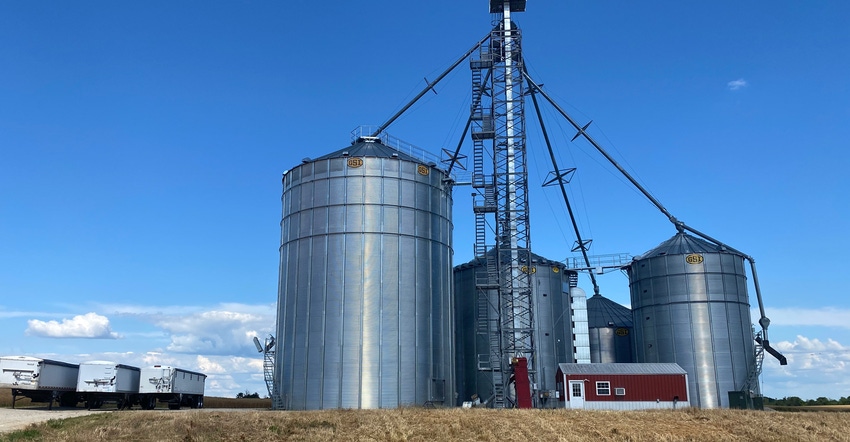
Early on a late August morning, a young man grabbed hold of the ladder on a tall grain bin. His task was to climb to the top and inspect seals around the bin cap. There was a heavy dew, and the ladder was wet.
He looked up, looked back down, let go of the ladder and walked away. As he did, he muttered to himself, “My momma didn’t raise no fool!” Someone else checked the lid later that day, once the ladder dried off.
Not everyone is comfortable climbing grain bin ladders. And each year, falls off grain bins or grain-handling equipment account for serious injuries and deaths.
“These could be avoided in almost every case,” says Bill Field, Purdue University Extension ag safety specialist. “Some of it involves thinking about what you are doing. Part of it means replacing older ladders. There are companies that offer stairs and other equipment for grain bins today. It can be a worthwhile investment.”
6 safety tips
Here are 6 ways you can minimize the risk for falls around grain bins and grain-handling equipment:
1. Let younger people climb. Falls tend to especially be a problem for older farmers, Field says. If there is someone younger who isn’t afraid of heights in your operation, consider asking them to climb. If safety harnesses are available and the situation calls for it, use a safety harness.
2. Replace cheap ladders on older bins. The toe clearance on some ladders of older bins isn’t sufficient, especially if you wear large work shoes. Consider replacing them, Field says. Greene Galvanized Stairs specializes in manufacturing safer stairs for grain bins. The company offers circular stairs with a handrail, and one model of circular stairs has a handrail on both sides. Visit greenestairs.com. Other companies also offer grain bin stairs.
3. Bin platforms. Grain bins should have a platform at the top to allow an observer to stand on something besides a ladder rung, Field advises. The platform also helps make the transition from a vertical climb to the roof or the move to access the lid door safer.
4. Check ladder load capacity on older bins. Ladders on older bins may only be rated at 250 pounds. Ladders on newer bins are designed to hold 350 pounds. Field personally investigated a case where a very large man broke part of the ladder free from the bin and fell simply because he weighed more than the ladder could support.
5. Install fall-prevention cages. New bins and silos should be equipped with these cages around ladders. Unfortunately, Field notes, farmers still have a choice whether to install them or leave them off. Make sure that if your bin still has ladders, they’re equipped with fall-prevention cages.
6. Use ladder guards. These are essentially devices that you can use to lock out someone from using a grain bin ladder or bin stairs. “They’re important to keep kids off ladders and stairs,” Field says. Your bin supplier should be able to source these guards for you.
About the Author(s)
You May Also Like




